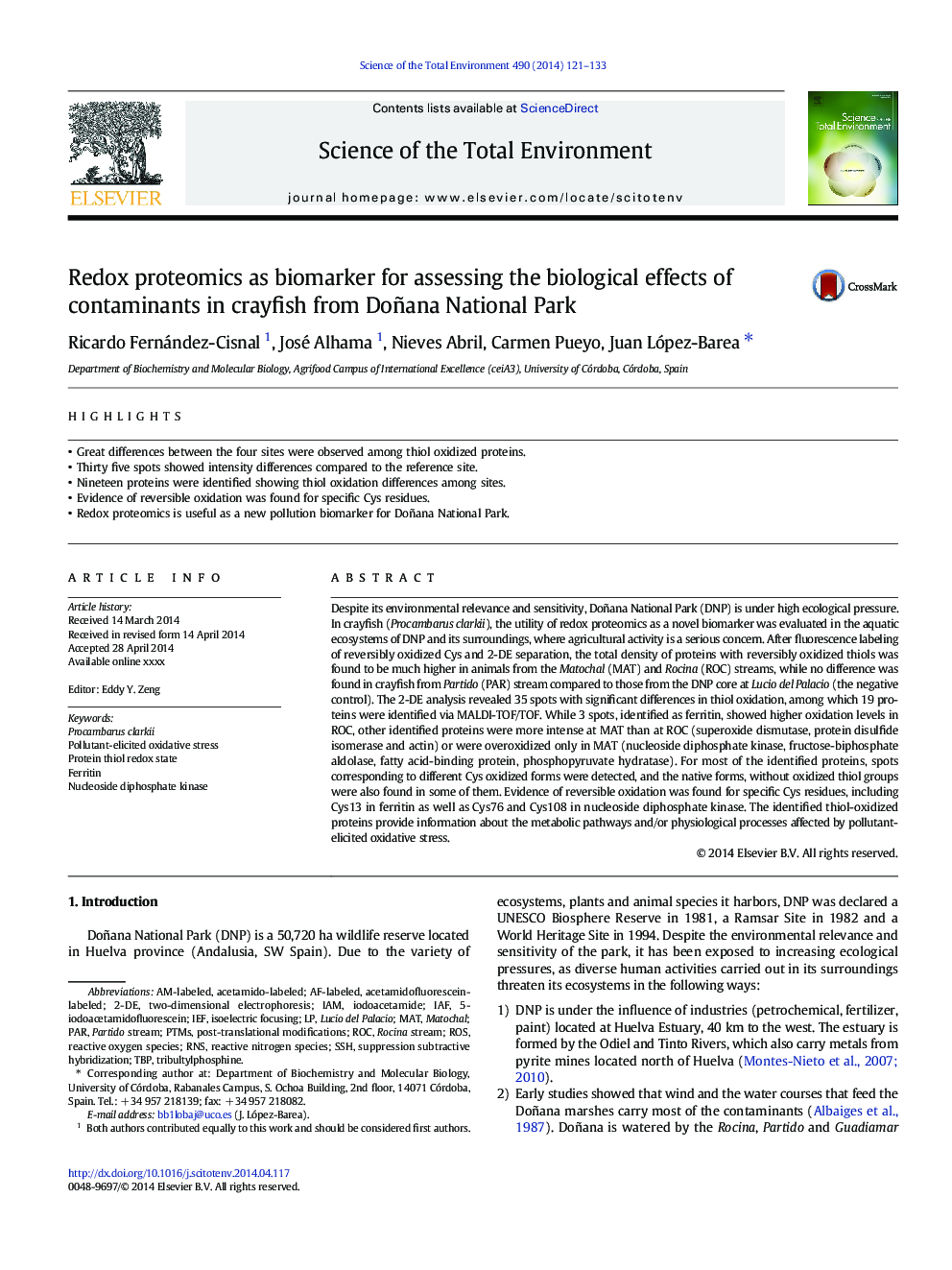| Article ID | Journal | Published Year | Pages | File Type |
|---|---|---|---|---|
| 6329006 | Science of The Total Environment | 2014 | 13 Pages |
Abstract
Despite its environmental relevance and sensitivity, Doñana National Park (DNP) is under high ecological pressure. In crayfish (Procambarus clarkii), the utility of redox proteomics as a novel biomarker was evaluated in the aquatic ecosystems of DNP and its surroundings, where agricultural activity is a serious concern. After fluorescence labeling of reversibly oxidized Cys and 2-DE separation, the total density of proteins with reversibly oxidized thiols was found to be much higher in animals from the Matochal (MAT) and Rocina (ROC) streams, while no difference was found in crayfish from Partido (PAR) stream compared to those from the DNP core at Lucio del Palacio (the negative control). The 2-DE analysis revealed 35 spots with significant differences in thiol oxidation, among which 19 proteins were identified via MALDI-TOF/TOF. While 3 spots, identified as ferritin, showed higher oxidation levels in ROC, other identified proteins were more intense at MAT than at ROC (superoxide dismutase, protein disulfide isomerase and actin) or were overoxidized only in MAT (nucleoside diphosphate kinase, fructose-biphosphate aldolase, fatty acid-binding protein, phosphopyruvate hydratase). For most of the identified proteins, spots corresponding to different Cys oxidized forms were detected, and the native forms, without oxidized thiol groups were also found in some of them. Evidence of reversible oxidation was found for specific Cys residues, including Cys13 in ferritin as well as Cys76 and Cys108 in nucleoside diphosphate kinase. The identified thiol-oxidized proteins provide information about the metabolic pathways and/or physiological processes affected by pollutant-elicited oxidative stress.
Keywords
TBPProcambarus clarkiiPTMsIAFIEFSSHRNS2-DEROC5-IodoacetamidofluoresceinROSTwo-dimensional electrophoresispost-translational modificationsisoelectric focusingParNucleoside diphosphate kinaseFerritinMatIAMSuppression subtractive hybridizationreactive nitrogen speciesReactive oxygen speciesiodoacetamide
Related Topics
Life Sciences
Environmental Science
Environmental Chemistry
Authors
Ricardo Fernández-Cisnal, José Alhama, Nieves Abril, Carmen Pueyo, Juan López-Barea,
